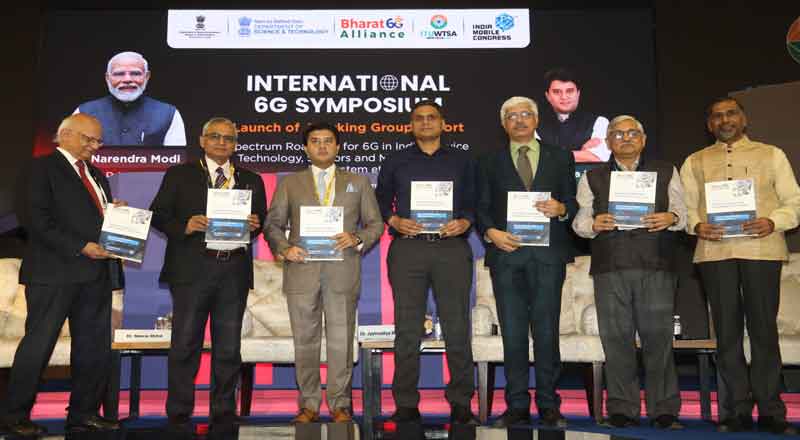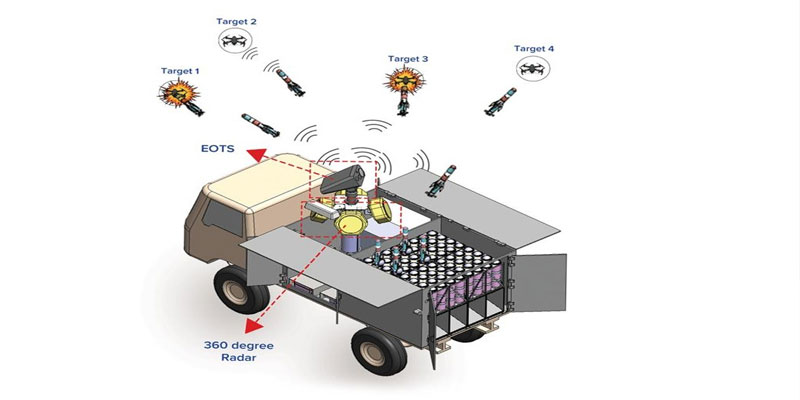The second day of IMC 2024 also witnessed senior industry leaders deliberating on relevant themes, including
Future Digital Infrastructure for Viksit BHARAT, AI driving Autonomous networks of the future and the Expanding Role of Telecom Service Providers in Ensuring Cybersecurity
New Delhi, 16th October 2024: The 8th Edition of Indian Mobile Congress (IMC) 2024, the largest telecom, media and technology forum in Asia, jointly organized by the Department of Telecommunications (DoT) and the Cellular Operators Association of India (COAI), entered in 2nd day showcasing futuristic technologies, integration of AI in across sectors and India’s digital and telecommunication potential with a range of emerging innovations. Inaugurated by Hon’ble Prime Minister Narendra Modi, India Mobile Congress 2024 is happening concurrently with ITU-WTSA, with participation from over 120 countries.
The second day of IMC 2024 began with a breakfast meeting of Shri Jyotiraditya M. Scindia, Hon’ble Minister of Communications and Development of Northeastern Region, with prominent CEOs from leading global companies on the theme ‘Leading in the Moment: The Future is Now’.
Day 2 also saw the inauguration of International 6G Symposium, Launch of Telecom Smart Cities Index by OpenSignal and Workshop with Academicians of 5G Test Labs.
Inauguration of International 6G Symposium
The International 6G Symposium was inaugurated at the International 6G Symposium during India Mobile Congress 2024 by Shri Jyotiraditya M. Scindia, Hon’ble Minister of Communications and Development of Northeastern Region. Highlighting India’s ambition to lead global 6G innovation, Honorable Minister emphasized that India, having successfully implemented one of the fastest 5G rollouts, is now poised to shape the future of 6G with standards that are inclusive, accessible, and affordable for all. He underscored the importance of cybersecurity and India’s capability to contribute to the formulation of 6G regulations.
Launch of Telecom Smart Cities Index by Opensignal
Opensignal’s Indian Cities Digital Readiness Ranking (ICDRR) assesses 50 Indian cities’ mobile infrastructure, highlighting their readiness for smart city transformation through 4G/5G Availability, Consistent Quality, and Overall Download Speeds. Top 5 ranked cities in India are: Srinagar, Agra, Faridabad, Jaipur and Patna.
Workshop with Academicians of 5G Test Labs – The workshop with academicians of 5G test labs included discussions on enhancing indigenous 5G network for 5G+/6G standard, role of enterprise private networks, network transformation with 5G/5G+ and applications for enterprise verticals, industrial 5G use cases and live demos done by 5G ACIA in their test beds. The leaders deliberated on 5G (IOT) Use cases in industries, healthcare, smart grids, agriculture, education, among others.
The day also featured important sessions and panels which included: Supercharging India through Equitable AI, Future unveiled: Key insights for the new techade, Securing the Digital realm: Enhancing cyber defense, Techos pioneering the future of private networks, AI driving Autonomous networks of the future (Part A), AI-enhanced processing : The future of Chipsets, Navigating Gen AI: Advances challenges and opportunities, Future Digital Infrastructure for Viksit BHARAT, Smart Cities Index Launch, The Expanding Role of Telecom Service Providers in Ensuring Cybersecurity, Satellite Communication: The Pulse of a Digital Nation, Decarbonizing for a Sustainable Digital Future.
The extensive lineup of more than 100 sessions continued on the second day, highlighting the transformative potential of emerging technologies and role of AI across industries such as telecom, satcom, semiconductors, cybersecurity, education, cloud & edge computing, electronics manufacturing and their impact on society and the economy worldwide.
Quotes from key industry leaders on Day 2 of India Mobile Congress 2024:
Dr. Neeraj Mittal, Secretary, DoT said, “India is becoming a focal point for global innovation in technologies. The IMC and the ITU-WTSA is playing crucial roles in showcasing products, setting standards, and driving collaboration. As a leader in the 6G Alliance, India aims to collaborate with partners to advance research, standardization, and public-private partnerships. Joint research efforts, policy harmonization, and the development of skilled manpower are key priorities. Through these initiatives, India seeks to position itself as a global leader in 6G technology and drive innovation and development.”
Shri D Sridhar Babu, IT Minister, Telangana said, “Telangana stands as a beacon of innovation, boasting impressive statistics that highlight our state’s technological and academic prowess. We have 1.5 lakh engineers, 1 lakh STEM graduates, and a total of 2.5 lakh graduates fuelling our dynamic workforce. Telangana is uniquely positioned to harness this growth. Our approach to becoming an AI powerhouse is not only visionary but meticulously executed. We are developing an AI-ready ecosystem characterized by state-of-the-art compute capacity, unified AI services, and substantial funding for AI startups. At the core of this vision is the Telangana AI Mission, built upon seven foundational pillars designed to drive our AI strategy forward. These pillars include the Young India Skill Development University, AI Capacity, Trust in AI, AI City, CoEs for key industries, AI for Grassroots, and AI in Governance.”
Lt. Gen. Dr. S.P. Kochhar, DG, COAI said, “As technology advances at an unprecedented pace, policies and regulations must adapt rapidly to keep up. The growing complexity of network boundaries, data sovereignty, and the integration of man-machine interfaces in 5G and beyond call for a seamless blend of public-private partnerships. By leveraging the private sector’s expertise and integrating cutting-edge technologies like AI and blockchain, we can build policies that are dynamic, interactive, and future-ready. Technologies like quantum computing and blockchain will play a key role in enforcing these policies, but they also bring challenges such as data sovereignty and Global Personal Taxation Regimes (GPTR), which are not inherently supported by technology. These concepts are alien to the digital infrastructure, yet legislation continues to enforce policies that don’t align with the technical capabilities of the systems in place.”
Erik Ekudden, CTO, Ericsson said, “We are currently implementing a program utilizing open APIs for cloud and network integration, aiming to make networks equally open for business over the next decade. Historically, the focus was on meeting consumer needs, but in the future, the emphasis will shift towards supporting societal needs. Although India is in the early stages of 5G rollout, there is significant potential. Predictions indicate substantial growth in mobile technology adoption, with millions of households expected to connect in the coming years. This access to 5G technology will drive enterprise upgrades and government self-reliance, setting the stage for the next wave of innovation. Ongoing research and standardization efforts focus on the smooth migration from current technologies to future ones like 6G.”
Lt. Gen. AK Bhatt (Retd.), DG, ISpA said, “We must address the fact that 40% of India’s population, which remains offline, is nearly twice the population of the United States. The digital divide is most pronounced in our rural areas, where traditional infrastructure faces significant challenges. Fiber optic cables and mobile towers, the backbone of our current internet infrastructure, are costly and often impractical to implement in remote and rugged terrains. Communication will continue to be the largest revenue source, with new constellations expanding the reach of satellite communications, particularly for mobility in remote areas, and reducing traditional demands for a much larger number of satellites. Several constellations, including Eutelsat OneWeb, SpaceX, and Amazon’s Kuiper, are already in place, and more are expected to emerge soon. This market will accelerate with the availability of broadband connectivity. The satellite market in India is poised for explosive growth, with the number of satellite internet users expected to increase six-fold by 2025, reaching about two million.”
- G. Subramaniam, Chairman, Bharat 6G Alliancesaid, “Although the future is difficult to predict, we will witness seamless connections between humans and machines and various other devices if we keep connecting the dots with ceaseless innovations. Undoubtedly, we are gauging humongous possibilities with the emerging digital and communication technologies. However, for this, a reliable, secure, and trusted next-gen network is essential to bring these ideas to a consequence and improve the overall quality of life on Earth. We at Bharat 6G Alliance are visualizing this future by working closely with the academia, TSPs, R&D organizations, and OEMs. Together we will define the future comprising of technical innovations and expert innovations and this will empower people at large. This 6G symposium will bring together experts to nurture and open collaborative research and innovation possibilities.”
Savi Soin, Senior Vice President and President, Qualcomm said, “The cost of running an AI model is very expensive. Gen AI is developing in the cloud and edge in parallel. By creating used cases, India is leading in the introduction of a new techade. We are launching new devices and chips which have AI capability while offering premium performance. We have best-in-class engineers that are working on autonomous and IoT devices that are customizing the solutions for the Indian market. To give back to the community we have semiconductor workshops that enable students and startups to gain hands on experience of our technology and its capabilities.”
Tarun Chhabra, Sr. Vice President & Country Head, Nokia India said, “There is a huge change occurring in the device ecosystem, especially in the smartphone vertical. India has made commendable progress in 5G and going ahead, we need to create future-ready networks which can support even more advanced devices and new age technologies like AI. We are also working on boosting the sensing capacity of networks, which can facilitate enhanced and autonomous use cases. The future will be driven by robust collaboration between the customer and partner ecosystem, opening up of networks for innovation and interoperability. The next techade will witness the fusion of digital and physical worlds, augmenting human capabilities with AI-enhanced networks that sense, think and act being vital for this evolution.”
Jong Bum Park, President & CEO, Samsung said, “As we advance towards a hyper connected future with 5G and IoT, it is imperative to secure our devices and Samsung is, accordingly, prioritizing data security and privacy. At Samsung, we are constantly exploring ways to add extra levels of security to our software and hardware offerings and ensuring a safer user experience. With the benefit of increased connectivity, there is an increased possibility of security breaches and Samsung Knox is built to counteract these issues, including unauthorised access and personal data breaches.”
Anku Jain, Managing Director, MediaTek India said, “India has a content generation economy and 5G FWA is allowing 5G connectivity in remote areas. Further, AI chipsets are optimising bandwidth, increasing reliability and advancing the edge computing, speeding up response times, enabling providers to offer efficient, real-time data services and monitoring solutions. MediaTek is extensively focusing on Edge AI to locally facilitate the large computations required by Large Language Model (LLM), thereby enhancing efficiency and user privacy.”
Siddharth Talawadekar, VP & Business Head – IoT, Bharti Airtel Digital, said, “The evolution of mobile networks from 2G to 5G, highlighting the rapid technological advancements and the anticipated transition to 6G. It emphasizes the role of quantum computing in accelerating the digital revolution and the integration of technologies like AI, machine learning, and cloud computing in transforming industries. It also touches on the democratization of technology through apps, the rise of quick commerce, and the impact of AI on supply chain operations. Additionally, the development of smart factories and private networks, and the potential of smart utilities to optimize energy demands and grid management.”
Concurrent to IMC 2024, India is also hosting the prestigious international conferences – World Telecommunication Standardization Assembly New Delhi 2024 (WTSA 2024) and Global Standards Symposium (GSS 2024) from 14-24 October 2024 at Pragati Maidan itself.
India Mobile Congress, Asia’s largest digital technology forum, has become a well-known platform across the globe for showcasing innovative solutions, services and state-of-the-art use cases for industry, government, academics, startups and other key stakeholders in the technology and telecom ecosystem. The India Mobile Congress 2024 will showcase over 400 exhibitors, about 900 startups, and participation from over 120 countries. The event also aims to showcase more than 900 technology use case scenarios, host more than 100 sessions and discussion with over 600 global and Indian speakers.
manish kumar verma





